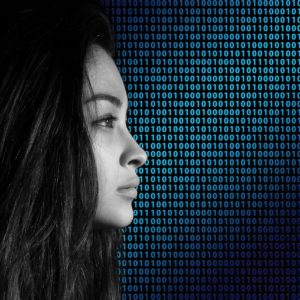Digital Humanities (DH), Digital History, and Digital Methods are three interrelated areas that leverage digital technologies to enhance the study and understanding of human culture, history, and society. These disciplines combine traditional humanities scholarship with cutting-edge computational tools, offering new perspectives and methodologies for research and education.
Digital Humanities: Bridging Technology and Culture
Digital Humanities is an interdisciplinary field that incorporates digital tools and methods into humanities research and teaching. It encompasses a wide range of activities, including the digitization of historical texts, the creation of digital archives, the development of multimedia projects, and the use of data analysis to explore cultural trends. By integrating technology with traditional humanities disciplines like literature, philosophy, and art history, DH enables scholars to uncover new insights and present their findings in innovative ways.
One of the core benefits of Digital Humanities is its ability to make cultural artifacts more accessible. Digitized collections allow researchers and the general public to explore rare manuscripts, artworks, and historical documents from anywhere in the world. Additionally, digital platforms can facilitate collaborative research, allowing scholars to work together across geographical boundaries.
Digital History: Transforming the Study of the Past
Digital History is a subfield of Digital Humanities that focuses specifically on the application of digital tools to historical research. It involves the use of databases, GIS (Geographic Information Systems), digital mapping, and other technologies to analyze historical data and present historical narratives.
Digital History projects often involve the creation of interactive websites and digital exhibits that make historical information more engaging and accessible to a broader audience. For example, digital archives can compile primary source documents from different locations, providing a comprehensive resource for historians and educators. Interactive maps and visualizations can illustrate historical events and trends in a dynamic, visual format, making complex information more understandable.
The use of digital tools also allows historians to analyze large datasets, uncover patterns, and test hypotheses in ways that were previously impossible. Text mining, for example, can reveal linguistic trends and changes over time, while network analysis can map relationships between historical figures and organizations.
Digital Methods: Tools and Techniques for Modern Research
Digital Methods refer to the specific tools and techniques used in Digital Humanities and Digital History research. These methods include:
- Text Analysis and Mining: Using software to analyze large corpora of text for patterns, themes, and linguistic features.
- Digital Mapping and GIS: Creating maps and spatial visualizations to explore geographic and temporal relationships.
- Data Visualization: Developing charts, graphs, and interactive visualizations to represent complex data.
- Network Analysis: Mapping and analyzing relationships between entities, such as social networks or trade routes.
- Digitization and Archiving: Converting physical documents and artifacts into digital formats and organizing them in accessible databases.
These methods enhance the ability of researchers to handle large volumes of data and extract meaningful insights. They also promote interdisciplinary collaboration, as scholars from different fields can contribute their expertise to complex projects.
The Future of Digital Scholarship
The integration of digital technologies into humanities research is still evolving, with new tools and methodologies continuously emerging. As these technologies advance, they promise to further transform how we study and understand human culture and history. For example, advancements in AI and machine learning are opening new possibilities for data analysis and pattern recognition, while virtual and augmented reality offer new ways to experience historical events and cultural artifacts.
Moreover, the principles of open access and digital preservation are becoming increasingly important. Ensuring that digital resources are available to future generations requires careful planning and the development of robust, sustainable infrastructure.
Digital Humanities, Digital History, and Digital Methods
Digital Humanities, Digital History, and Digital Methods represent a dynamic intersection of technology and traditional scholarship. By embracing these fields, researchers can unlock new perspectives on historical and cultural phenomena, engage wider audiences, and contribute to the ongoing evolution of humanities research in the digital age. Whether through digitizing ancient manuscripts, creating interactive historical maps, or using data analysis to uncover hidden patterns, the integration of digital tools and methods is reshaping our understanding of the human experience.
Digital Humanities – Research
A 4 year structured doctoral programme in Digital Humanities research. Students may carry out their research in An Foras Feasa, or with co-registration in a participating academic department (e.g. English, Music, Media Studies, History, Celtic Studies, Languages).
Digital Humanities
Digital Humanities is a fast-growing dynamic interdisciplinary field at the cutting edge of 21st century research methods. Ideal for students who wish to learn to use digital technology to analyse and discover new knowledge about heritage and historic and cultural works. The course caters for those with relatively little technical skills from an Arts background…
Digital Humanities
The postgraduate diploma prepares graduates from Arts and Humanities, Social Science and Computer Science backgrounds to complement their existing research skills with modern digital methods vital for the cultural heritage and information sectors. It is excellent preparation for those wishing to pursue a career in digital arts and humanities, digital preservation, or digital cultural heritage.












Comments